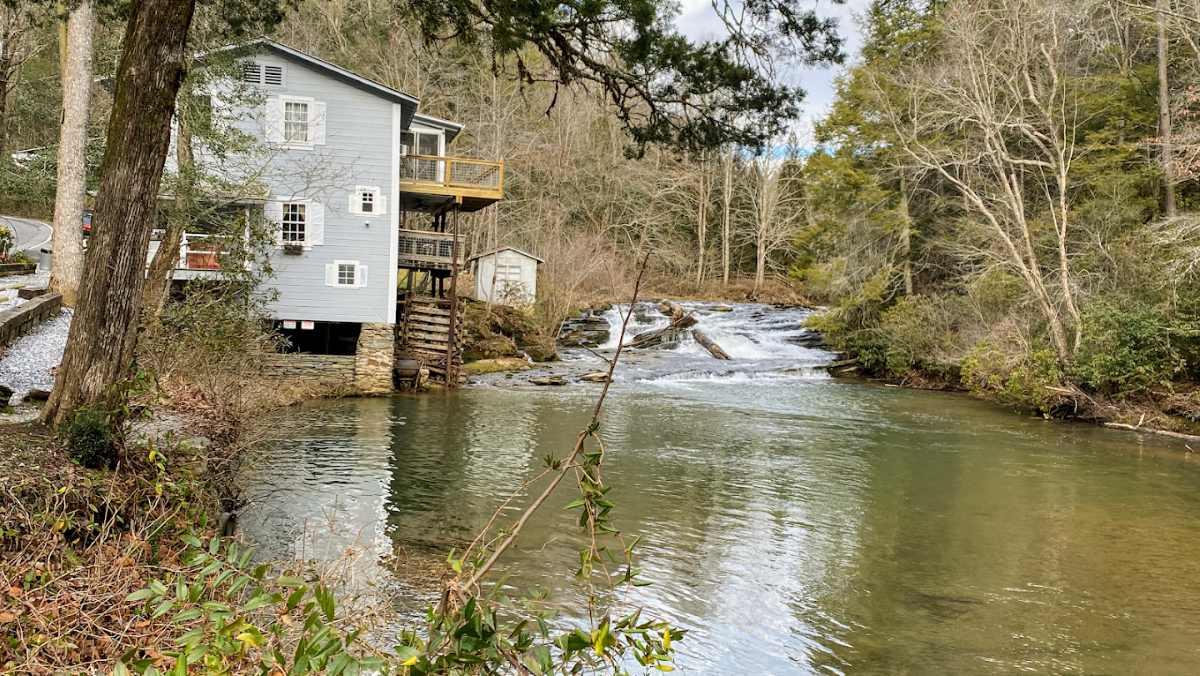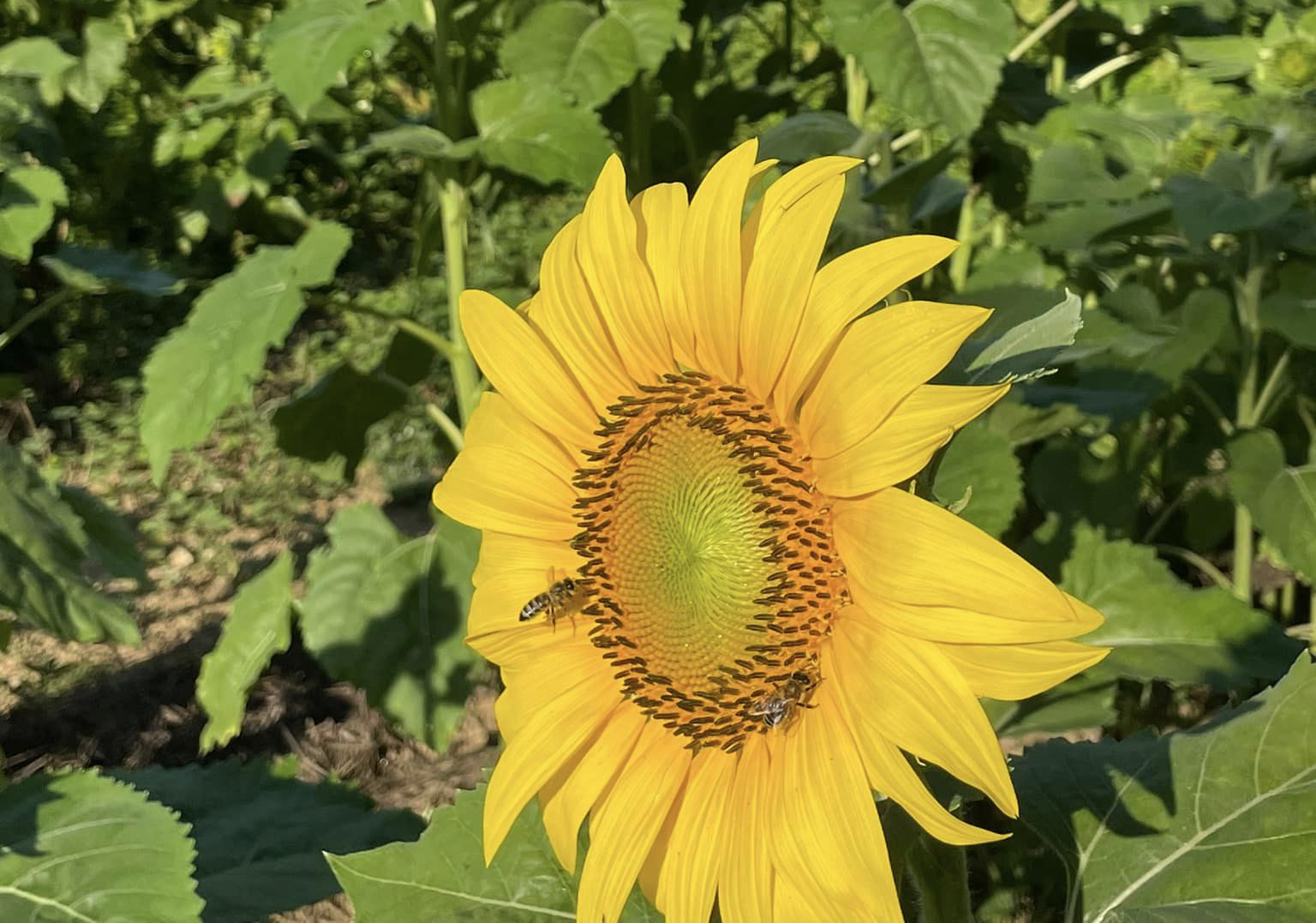
Dahlonega is known as the site of the first major gold rush in the United States, but it’s not the only place in North Georgia with a golden history.
According to White’s Statistics of Georgia, gold was discovered in 1829 on Dukes Creek in what was then Habersham County (present-day White County). In fact, much of the Nacoochee Valley was rich with gold in the early 1900s. Panning for gold still takes place around Helen but draws tourists instead of miners.
My husband, Bob, and I decided it would make a good afternoon activity with our littlest grandchildren. Seven-year-old Ava and her three-year-old brother Caleb love hands-on activities and are fascinated by dirt, rocks, and dinosaurs. The afternoon turned out to be more fun than we could have anticipated.
Panning for gold
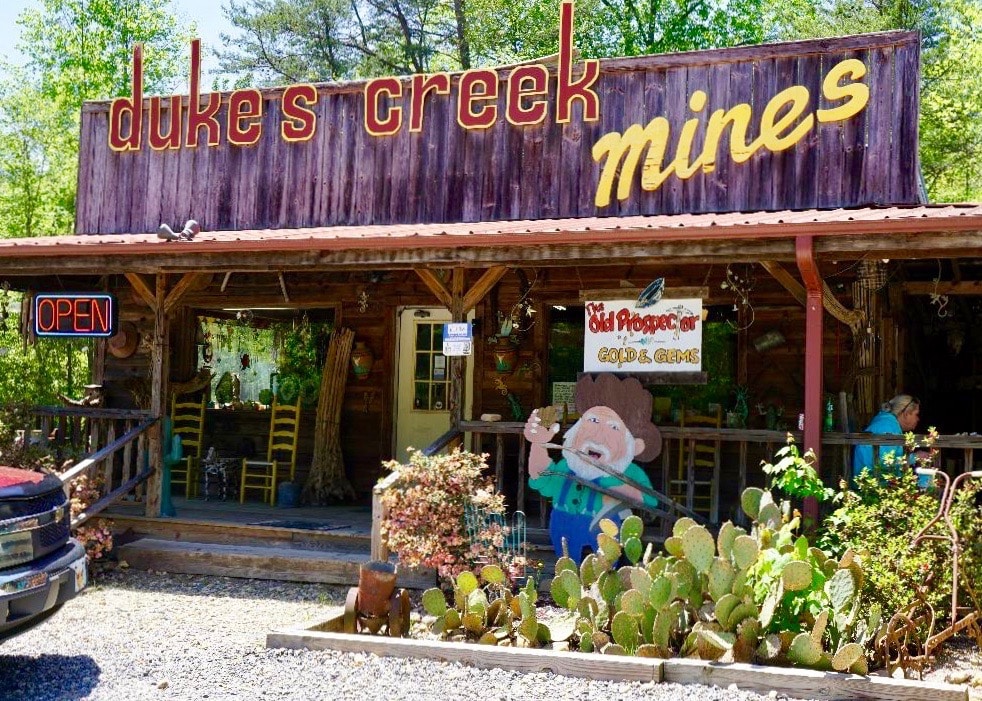
Panning for gold is simple, especially at some of the places that cater to tourists. The process takes dirt, a pan or sifter, and a source of water. The first time I went panning for gold, I was probably about thirteen. We used a metal pan in which we scooped up some dirt and then swirled the water around to remove the dirt. Since the gold weighs more, it would be found on the bottom of the pan after everything else was washed away.
Today, a large screened sieve is used. The water easily washes away the dirt, leaving the discovered treasure behind. It’s easy to do, and every scoop of dirt offers the opportunity to discover something truly remarkable.
Panning for fossils and gems
When I checked online for hours of operation at one of the places to pan near Helen, I discovered prospective “miners” had choices of what to mine that included fossils. My grandchildren are totally enthralled with dinosaurs, so I knew the fossils would be a hit. We purchased one small bucket of dirt, and the children shared it. They found tons of shark teeth, small ammonites, crinoid stems, amber pieces, and much, much more. The children were thrilled with their findings and spent the evening comparing what they had found with photos in a book picked up at the mining place.

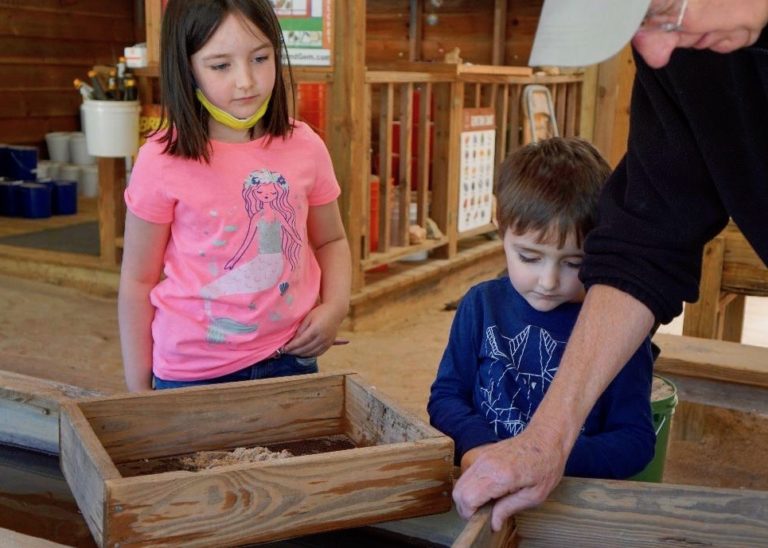
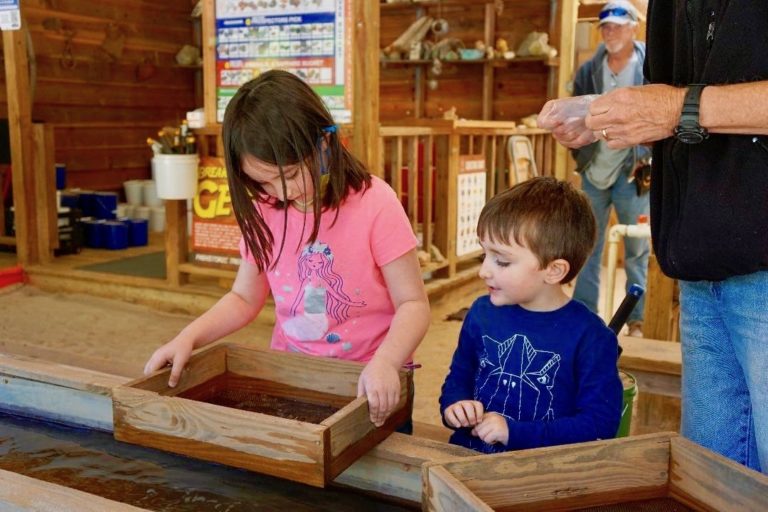
A little bit of “lagniappe”
One of my favorite words from my days in New Orleans is lagniappe. It’s a Creole word that means a little something extra. Apparently, merchants in Louisiana in the 1840s would give a customer a little something more after a sale had been completed. Lagniappe, to me, is always about that extra something that is a surprise. For Ava, the lagniappe was breaking open of a geode. Ava has always been fascinated with geodes and always asks to purchase one at museum stores. The store owner was very sweet and patient as he talked her through breaking one open by herself.
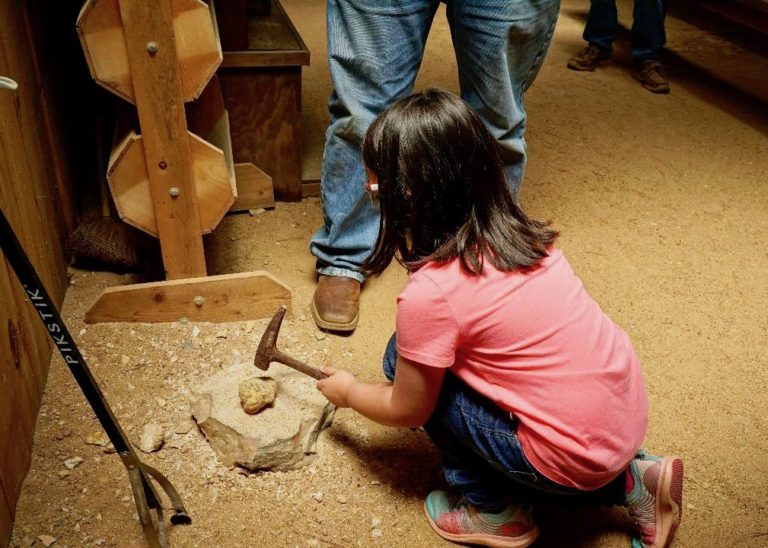
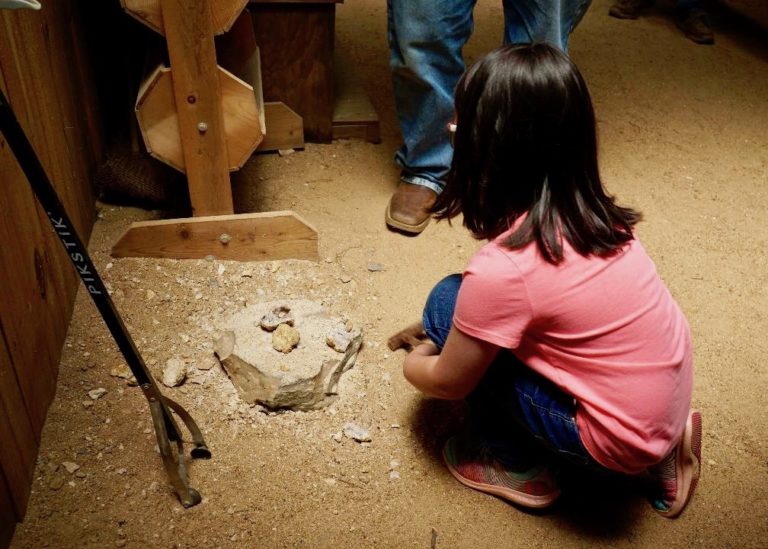

All the details
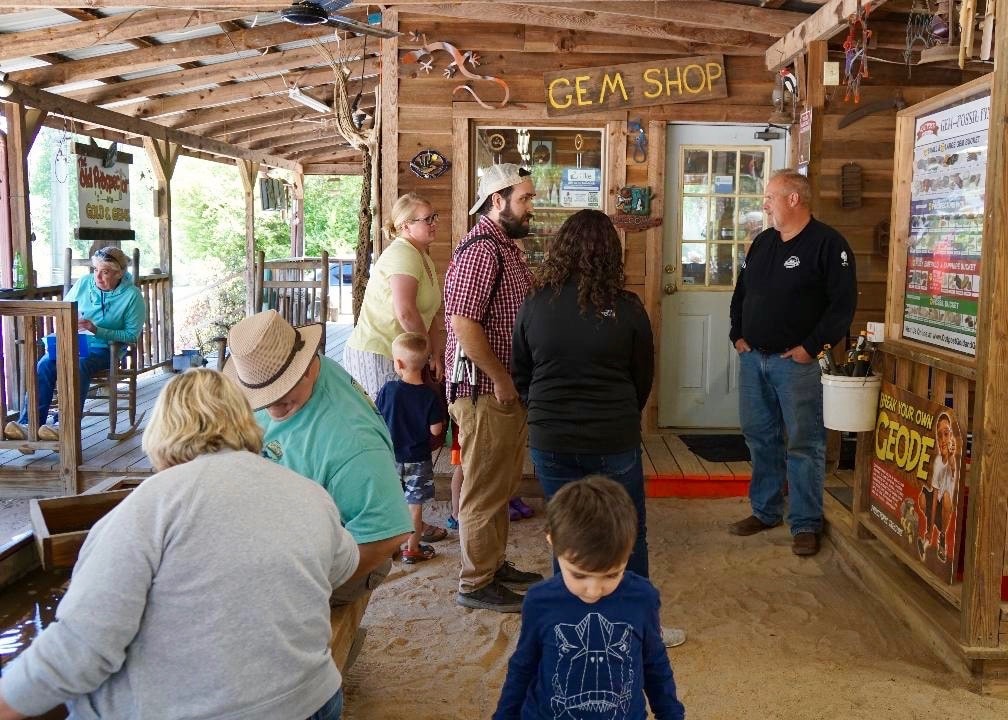
There are several places to mine for gold, fossils, and gems around North Georgia. We went to Dukes Creek Gold and Ruby Mine, located just south of Nacoochee Valley at 6145 GA 75, in Sautee Nacoochee, Georgia. Outpost Gold & Gem Panning, located at 7901 South Main Street in Helen, Georgia, is connected to Dukes Creek. The soil you use is dug from the family mine that the family has mined for 50 years.
Other mining opportunities in North Georgia include:
- Consolidated Gold Mine near Dahlonega, Georgia, at 185 Consolidated Gold Mine Road.
- Crisson Gold Mine, also near Dahlonega, Georgia, at 2736 Morrison Moore Parkway East.
- Aska Mining Company, located near Blue Ridge, Georgia, at 8436 Aska Road.
- Talking Rock General, located near Talking Rock, Georgia, at 5119 Hwy 136 West.
Prices vary based on the size of the pail of dirt and can be purchased at most of these according to what you hope to find: gold, small gems, large gems, or fossils. Regardless of what you choose to dig into, you’ll have a wonderful afternoon – adults and children alike.
Check each website for updated information about available times. Schedules have changed some during the pandemic.

